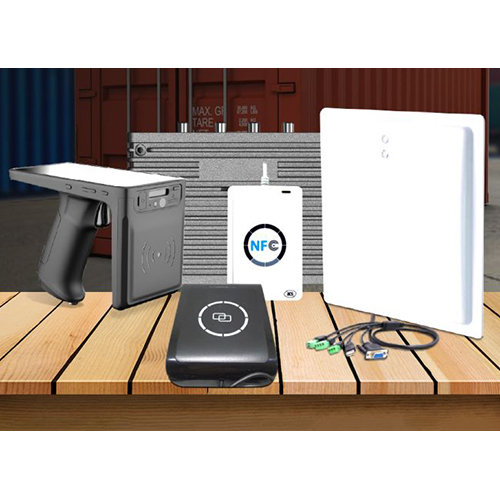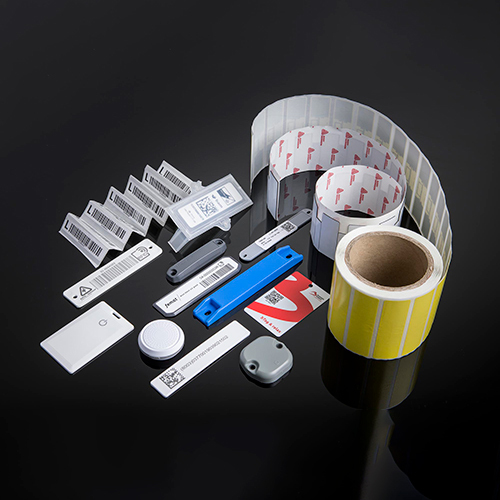- Home Page
- Company Profile
-
Our Products
- BarCode And RFID Hardware
- Labels and Printing Ribbons
- Industrial High-Performance Labels And Tags
- Heat Resistant Labels And Tags
- Tear Resistant And Rip-Proof Tags
- Polyimide PCB Labels
- Wire And Cable Labels
- Tyre Barcode Label
- Sanitaryware Barcode Label
- Security Seal Labels
- Paint Protective Barcode Label
- Gas Cylinder Label Tag
- Barcode Tag And Label for Heat Treatment Process
- Metal Barcode Label And Tag
- RFID Tags And Labels
- System Integration Solutions
- Software Solutions
- Contact Us
X
Product Description
An RFID (Radio Frequency Identification) reader, also known as an interrogator, is a device that uses radio waves to communicate with RFID tags. These tags are attached to objects and contain electronically stored information.
RFID readers can be broadly categorized into two types:
Fixed RFID Readers and Mobile RFID Readers
There are several types of RFID readers, each serving different purposes. Here are the main categories:
1. Fixed RFID Readers
These are stationary devices typically mounted on walls, ceilings, or entry points. They are used in environments like warehouses, retail stores, and manufacturing facilities.
Examples include:
Portal Readers: Installed at doorways or passage points.
Overhead Readers: Mounted on ceilings to cover large areas.
2. Mobile RFID Readers
These are handheld or portable devices that allow users to move around and scan tags in various locations. They are often used in asset tracking, inventory management, and field service applications. Examples include:
Handheld Readers: Portable devices similar to barcode scanners.
Wearable Readers: Integrated into wearable technology like gloves or wristbands.
3. Integrated RFID Readers
These readers combine the RFID reader and antenna in a single compact unit, making them easy to deploy in confined spaces. They are often used in applications where space is limited.
4. USB RFID Readers
These are compact readers that connect to a computer via a USB port. They are commonly used for desktop applications, such as access control and data entry.
5. Bluetooth RFID Readers
These readers connect to devices like smartphones or tablets via Bluetooth, providing flexibility and ease of use in mobile applications.
6. Embedded RFID Readers
These are small modules or chips integrated into other devices or systems, such as printers, mobile computers, or industrial equipment.
Each type of RFID reader has its own unique features and is suited to different applications. If you have a specific use case in mind, we can help you find the best type of RFID reader for your needs.
How RFID Technology Works
- Signal Emission: The RFID reader emits a radio frequency signal via its antenna.
- Tag Activation: Passive RFID tags receive the signal and draw power from it, while active tags use their internal power source.
- Data Transmission: The tag responds to the reader's signal by transmitting its unique identification information.
- Data Reception and Processing: The RFID reader receives the tag's signal, decodes the information, and sends it to a central system for processing and storage.
RFID Frequency Bands
RFID systems operate on different frequency bands, each with its own range and use cases:
- Low Frequency (LF): 125-134 kHz. Used for applications like animal tracking and access control. Short reading range (up to 10 cm).
- High Frequency (HF): 13.56 MHz. Commonly used for library book tracking and contactless payment systems. Medium reading range (up to 1 meter).
- Ultra-High Frequency (UHF): 860-960 MHz. Ideal for inventory management and supply chain logistics. Long reading range (up to 12 meters).
- Microwave Frequency: 2.45 GHz and above. Used for toll collection and some industrial applications. Long reading range (up to several meters).
Applications of RFID Technology:
RFID technology is used in various industries for numerous applications, including:
- Supply Chain Management: Tracking goods from manufacturing to delivery.
- Retail: Inventory management and theft prevention.
- Healthcare: Tracking medical equipment and patient identification.
- Transportation: Electronic toll collection and vehicle tracking.
- Access Control: Managing entry to secure areas and facilities.
RFID technology continues to evolve, offering more efficient and versatile solutions for various industries. If you have any specific applications or further questions about RFID technology, feel free to ask. Contact us today.
Tell us about your requirement

Price:
Quantity
Select Unit
- 50
- 100
- 200
- 250
- 500
- 1000+
Additional detail
Mobile number
Email






